It's starting out to be a pretty busy year already for Prowler Aviation. I've gotten a few interesting emails recently and gotten a few things accomplished around here. So, since I've got a few days hanging out in a hotel room while I'm on this current work trip, I thought I'd try to crank out a quick blog update.
Here's a list of the items for this update:
1. Kit #15 Has A New Owner
2. Ray's Tailwheel Work
3. Progess on 400 Ton Press Rebuild
4. Diesel Generator Project is Finished
I'll try to keep this update simple, with lots of pictures, a few videos and minimal writing. Here ya go:
1. Kit #15 Has A New Owner - I was contacted last year by a nice fella by the name of Frank Kincaid. Frank prefers to go by the name "Pancho." Anyway, as I mentioned in the recent email to the Prowler Builder's Group, Pancho reigns from the great state of Texas (Seguin) and he purchased Kit #15 from Dr. William Peper (near Waco, I believe). Dr. Peper was a customer of the original Prowler Aviation and was the original purchaser of Kit #15 from George.
I have never been in direct contact with Dr. Peper, but, over the years, I've spoken with a few folks who have been. Mostly, I've talked with a few folks who had tried to make a deal with Dr. Peper for the purchase of his kit. I believe that I was the one who may have mentioned Dr. Peper's kit as an option that Pancho might consider - since they were both there in Texas.
Next I knew, Pancho wrote me to tell me that he had gotten he kit from Dr. Peper. Since then, Pancho was kind enough to send me pictures of his kit. Here are a few views of the main wing center section:
Flaps and elevator control parts:
He reports that many of the parts are still wrapped just as they were shipped by George - all those years ago!
Horizontal Stab:
And, the other side....plus a vertical stab:
The MLG crate:
Rudder:
This looks like a pretty nice wing jig. As near as I can tell, it was built exactly as described in the original builder's manual. Make sure you keep that in tact when you are done with the build! Someday, another Prowler builder will buy it from you!!
The 3 main wing sections stacked together on top of one of the shipping crates:
From another angle:
Well, it certainly looks like you've got your work cut out for you Pancho! Congratulations, and welcome to the Prowler group. We look forward to seeing your progress as you breathe some new life into this "ole" Prowler project. I'm sure you'll build an excellent Prowler. Please let me know if there is anything we can do to help you with your project.
2. Ray's Tailwheel Work - Since the taxi tests that I shared in a previous blog update, Ray has been busy modifying and improving his tailwheel setup. To get started, he removed all the tail feathers. [BTW - if any of you are not aware, Ray has made his rudder post removable. This is not something that George provided for in the original manual. However, I recommend having a look at what Ray has done and doing something similar. It makes maintenance and troubleshooting much easier if you can remove all the parts back there (i.e.; rudder, elevator, vert stab & horiz stab.)] Here's Ray's aft empennage without all the control surfaces.
When Ray got the control surfaces removed and started checking things over, he discovered cracking in several places caused by the tailwheel operation. The small amount of cycling of the gear that he has done while building and testing was already taking a toll on the mid deck that forms the top of TW compartment. Obviously, that's a problem. These picture show the mid deck as it was before the repairs:
Fatigue cracking was taking place in the aluminum in the areas around the steel mounting brackets. Ray has since beefed these areas up with added layers of steel sheet.
If possible, I will try to get down to visit Ray again soon to get pictures of the repairs and improvements that he has made.
Getting back to the TW caster issue, so far, he has moved the main "A-Frame" mounting brackets lower from the main longeron in the empennage to get rid of his positive caster that he previously had. Those are the aluminum blocks (preliminary test spacers) that you can see located along each side of the TW compartment below:
Of course, as with any change on an airplane, that caused him to make several "ripple effect" changes to the TW operating linkages and mechanisms. Most notably, shortening the hydraulic cylinder by about 1.25". Here are the major operating components before the recent mods:
Ray believes that he has the linkage operating much better now. He has gotten the TW strut to have a -1 deg of caster in the unloaded condition. With the airplane loaded for flight, the strut should be very close to 0 deg of caster. Again, I will try to get out to see Ray and get photos of his repairs and modifications if I can - before he closes the aft empennage back up.
One other mod that Ray has to accomplish has to do with his fuel tanks. He's removed the wing tips to help him size up the job of trying to drill new, larger holes in the LE tank wing ribs. While, he has holes (top & bottom) in the nose ribs to allow for fuel transfer - they turned out to be too small and it is causing a problem with fueling the airplane. It takes much longer than desired to fuel the plane, as the fueler has to repetitively pump & wait, pump & wait (to prevent fuel spilling out the fill hole while fueling).
He thinks he's figured out a way to get a drill on a long rod and run it through the wing to open up some larger holes in the nose ribs. More to follow. In the meanwhile, if you're currently, actively building, please make a note to increase the size of the holes in your LE nose ribs on the outboard wing sections BEFORE you skin the wings.
I believe that the original nose ribs were shipped with 2 holes (1/4" dia.) in the tops and bottoms of the nose rips. Without doing any testing, and off the top of my head, I'd recommend opening these holes to at least 3/4". Make sure that you ONLY do this to the nose ribs on the interior of the fuel tank (not the most inboard and outboard nose ribs). If anyone has a better recommendation, please let me know.
Anyway, nice work Ray. Thank you for sharing all the information that you're finding out so that I can share it with the other current builders. Furthermore, I hope that I can share it with the future builders, or just fix the issue outright and incorporate this into the new Prowler design. Thanks, Ray.
3. Progess on 400 Ton Press Rebuild - If you've been following my epic battle of the 400 Ton press (to be used for making the "formed" Prowler parts) - you know that I bought a machine that was kinda trashed out. In previous posts I have documented the modifications to make it a rubber pad press, then the discovery of it leaking badly, next the investigation of the leaking seal, and finally outlining the proposed repairs.
Well, in a nutshell, to fix the leaking seal I am(was) going to need to repair or replace 4 main parts: 1.) Clean-up (re-bore) portions of the cylinder; 2.) Restore/rebuild the ram to take out the gouges/scratches and re-size the ram to fit the new cylinder dimenstion, and; 3.) Replace the urethane seal; 4.) Clean up & re-bore the clamp ring.
To fix the cylinder, I found Mark at A&A Machine who is located near me in Anderson, CA. He has a lathe large enough to re-bore my press cylinder. Here is Mark, showing me the cylinder mounted in his LeBlonde lathe:
He did an outstanding job cleaning up this cylinder for me. If you know anything about fixturing parts in a lathe, then you can appreciate the scope of the job to get a 1 ton hunk of steel mounted onto the headstock of a lathe this size.
If you aren't familiar with any of this, let me assure you that it is no small feat. Think of mounting something the shape of a coffee cup that is larger than 1/2 of a 55 gallon drum and weighs a little over 1 ton to a lazy-susan in such a manner that when you spin the lazy-susan - the cup spins PERFECTLY around the center axis of the lazy-susan - to the degree that the inside edges of the coffee cup vary less than 1/2 of the thickness of one of the hairs off the top of your head! That's what Mark accomplished!!
That is impressive! Here's another view (see the 1/2 of a 55 gallon drum in front of the lathe!):
And another view. I also had to have Mark open up the throat of the cylinder - which is the steel ring that is a smaller diameter than the opening about 2 inches inside the cylinder.
Mark charged me for 12 hours work on this part. I'd estimate the about 9-10 of those hours were dedicated to just fixturing the part on the headstock (the big lazy-susan thing laying on it's side):
Here's the tool that actually (eventually) did the cutting. That's a 4" diameter solid steel boring bar:
Here's a video of Mark starting the 1st cut pass:
So, now the 1st piece of the parts needing repair parts is back in the shop.
Looking ahead, I needed to find a new seal for the press. I first called a place recommended to me by the folks helping me figure this thing out. The recommended seal was from a company called Chestereton. In order to buy one of their seals, you have to go through a local sales rep located in your part of the county - for me that was Medford, OR. That bid came in at over $1.1K and would require nearly 3 weeks of lead time. That quote seemed a little high to me, and was going to take quite a while.
Now, granted, this is kind of a unique seal. They're not unheard of in the large press industry - but these sized seals are usually being bought by large companies that have these presses in service 20 hours a day doing production work and making $$$. They are NOT (usually) being purchased by some dude with a 400 Ton slab side press in his garage (on a budget) who is not really sure what he's doing (and not 100% sure that it's even going to work for him/me for what I need it to do) and might use it once a day - when I do finally figure out what I'm doing. So, THAT makes for interesting conversation when you're on the phone with most of these sales agents.
Anyway, persistence pays off. I finally got a lead on a place called Hercules Sealing Products. Turns out, they cut these seals, made to order to your exact metal dimensions; and will ship them to you directly (no middle-man sales rep). Cool! I was also told that if I ordered the seal before 3pm EST on any given day (normal business days), they could cut the seal and have it picked up by UPS (next day air) by the end of that same day. Now, THAT is service!
Well, since I started looking for a new seal with plenty of lead time - I did not need the next day air service. So, while sitting in a hotel room one Tues morning, I ordered the seal with just UPS Ground service. I got home on very next Thurs afternoon to find the seal sitting by my front door! Wow! Even though I ordered USP Ground shipping, and they charged me for USP Ground shipping - Hercules still shipped it to me next day air (knowingly, and intentionally)!! These guys are AWESOME!!! I am totally pleased with the product and service offered by Hercules. The best part is, Hercules saved me $500 off the price of the 1st quote from Chesterton.
Anyway here's a top, bottom and side view of the new urethane seal for the press:
With the seal in hand, I now have 2 of the 4 repaired/replace parts I need to put the press back together.
My last days off at home, I dropped off the clamp ring with Mark at A&A. He got the clamp ring cleaned up and re-bored to fit the ram precisely (just 0.004" of clearance all the way around). Here is the clamp ring back in the shop, after Mark finished it:
Now, I have 3 of the 4 parts that I need to get the press back together. The ram is another story. You may remember I took the ram to Chrome Craft in Sacramento to get it rebuilt.
James, the service rep that I am working with at Chrome Craft has been doing a great job and he worked with his restoration foreman to diagnose my ram and come up with a repair solution. First, they have looked over the ram and determined that the ram is cast iron - not cast steel. That matters, because hard chrome cannot be applied directly to cast iron - it doesn't stick. They also determined that my ram has already had a "build-up" repair done to it (metal was added to the outside of the ram). They can't, or they (understandably) won't do a "build-up" over a "build-up" repair. They can't guarantee that the 1st build-up repair won't "let loose" and ruin the new restoration. So, what they have recommended to me is:
1.) Put the ram in a huge O.D. grinder and take the old "build-up" off by removing 0.030" of metal off of the ram;
2.) Put the ram into a special, rotary welder and perform a single pass, stainless steel welding process to build-up the diameter of the ram. The new diameter after welding will be over the final desired ram diameter. (My final ram diameter has to be exactly 20.035"). Also, stainless welding sticks to cast iron - and hard chrome sticks to stainless steel. (there is a method to the madness);
3.) Put the ram back on the O.D. grinder and grind the diameter down to 20.032", and, finally;
4.) Put the ram into the hard chrome tank and put 0.003" chrome onto it.
As of right now, the ram is waiting for it's turn on the rotary welder (step 2. above) More to follow.
In the meantime, I will get busy cleaning up the rest of the press parts and putting some new paint on them - like the two slab sides:
I am also making plans for a mobile base to build to put under the press so that I can move it around the shop more easily. I have a fair amount of time off of the day-job at the end of Feb. I'm hoping (like crazy) to have all the pieces back in the shop (and the mobile base built) so that I put the press back together by the end of the month. I'll let you know how that goes.
4. Diesel Generator Project is Finished - I had a nice long block of days at home recently and decided to finally knock-out my diesel generator project. The items remaining to be finished included:
1.) Put the gen frame on rubber to isolate the vibration from the floor. Here it is on a 3/4" rubber pads with 3/8" pins through the frame and into holes in the floor to keep it from moving around;
2.) Take the control panel off of the frame and mount it to the floor (to reduce vibration to the panel);
3.) Take the fuel tank off of the frame and mount it to the floor/wall;
4.) Plumb the radiator overflow line to a catch tank (no pic);
5.) Remove the muffler and put in a flexible exhaust line to penetrate the shed wall;
6.) Build the steel wall penetration box for the exhaust, mount it in the wall and plumb in all the exhaust;
7.) Complete the wiring to the protections circuits (low oil pressure & high water temp). This is the FSS - fuel shutdown solenoid;
Some of the relays I bought to get the High Water Temp (HWT) circuit to work:
In the heat of battle while doing the wiring:
Getting closer:
More wiring in the control panel;
Final connection for the HWT and LOP circuits:
Add some wire loom around the wire runs to protect them, and it looks almost like a professional job!:
8.) Next, it was time to tackle the main electrical hook-ups to the property power system (mainly 200 amp service to the house, 100 amp service to the shop & 30 amp service to the well/pump house). Here I finished conduit plumbing from the gen shack (underground) up to the main property service panel off of the meter box:
9.) Added the main gen shed breaker (bottom):
10.) On the other end of the conduit - I had to build a small sub-panel inside the gen shack:
11.) Finish conduit and electrical wire hook-ups from the sub-panel to the control panel:
After putting it all together, here's a test run of the generator:
OK. That's all for this update. Hope you enjoyed catching up with what's going on here. I'll probably post another update when I get the press back together and get it working.




















































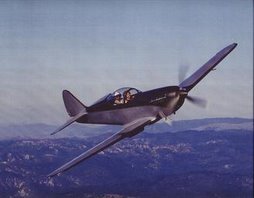
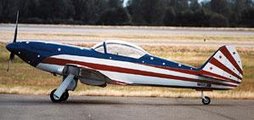
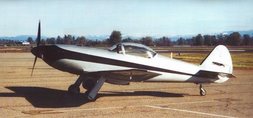
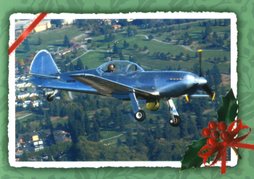
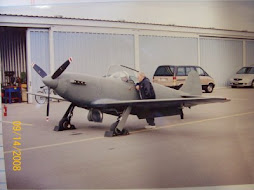
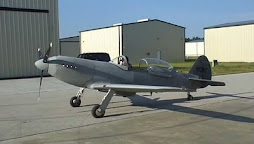

No comments:
Post a Comment